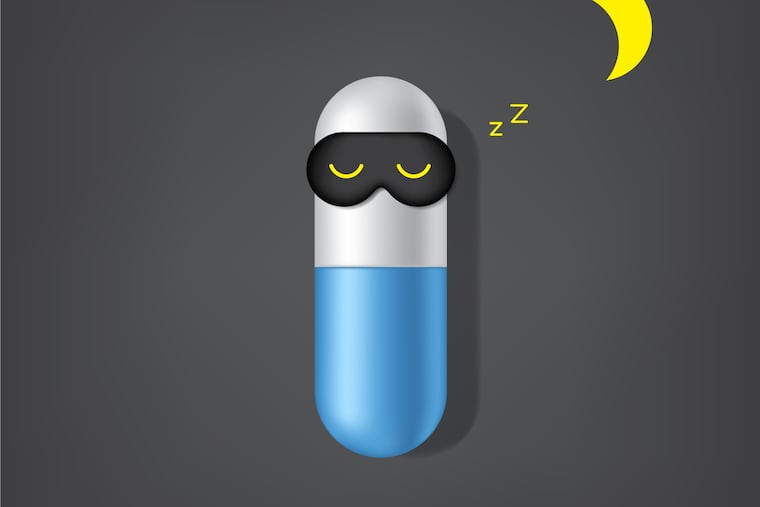Ambien, Sonata, and Lunesta get stronger warning from FDA
The warnings were prompted by reports of rare but serious injury.

It has been more than a decade since insomnia patients started to blame certain kinds of sleeping pills for sleepwalking, “sleep driving," and other erratic behaviors.
Serious consequences of taking the medicines are said to be rare. But they occur often enough that last week, the U.S. Food and Drug Administration increased its level of caution for several of the so-called Z-drugs, requiring them to be labeled with ”boxed" warnings.
We spoke with Karl Doghramji, medical director of the Jefferson Sleep Disorders Center, about what it means.
Which drugs are affected?
The warnings are required for drugs marketed as Lunesta, Sonata, Ambien, Edluar, Intermezzo, and Zolpimist. Called sedative-hypnotics, they are prescribed to treat insomnia, and are thought to work by slowing activity in the brain.
In rare cases, they can result in serious injury by leading patients to engage in risky behavior. Scientists do not fully understand why the drugs have this effect, but evidence suggests that the mechanism may be related to lowering a person’s inhibitions, Doghramji said.
How often does serious injury occur?
The FDA’s announcement was prompted by 20 patient deaths reported since 2005 and 46 nonfatal serious injuries dating back to 1992.
Of the 66 cases, 62 were reported to the agency through its adverse event reporting system – a database to which health-care providers, consumers, and manufacturers can contribute. The remaining four cases were identified in the medical literature.
Likely some adverse events are not reported, meaning the true number of cases is higher. Yet because the drugs have been prescribed millions of times, the percentage of patients who experience serious harm is probably quite low, Doghramji said.
The injuries included accidental overdoses, falls, burns, drowning, hypothermia, carbon monoxide poisoning, car crashes with the patient driving, gunshot wounds, and apparent suicide attempts. Patients usually did not remember the events, the agency said.
One high-profile case came in 2006, when then-Rep. Patrick Kennedy (D., R.I.) crashed his car into a security barrier outside the Capitol after taking Ambien in combination with a second drug.
What the warning means
The FDA has issued various lower-level warnings about the drugs in past years, starting in 2007.
A boxed warning – a reference to the black box around the printed language – represents the agency’s highest level of caution. A version of it must be included both in the prescribing information given to physicians and in the patient medication guide that comes with the package.
Physicians should not prescribe the drugs to patients who have experienced sleepwalking, sleep driving, or other “complex sleep behaviors” after taking them, the agency says. Patients who experience these side effects are advised to stop taking the drugs at once and inform their doctors.
Doghramji said some patients have stopped taking the drugs after experiencing unusual behavior, yet failed to tell him until he asked how well the medicine was working. Bad idea, he said.
“This warning reemphasizes for us what we already know,” the physician said. “We ought to be very careful as physicians when we prescribe these drugs, and as consumers when we take these drugs."
Why now?
The potential for erratic behavior has been known for years, to the point that it has become fodder for comedians and even defense attorneys seeking to explain clients’ actions.
Some physicians have expressed surprise at the timing of the agency’s increased warning level.
FDA spokesperson Sandy Walsh said that while adverse events remain rare, the ones being reported in recent years have tended to be more serious.
“During routine monitoring, the FDA began to observe an increase in the seriousness of the injuries being reported, including deaths, and opened a new safety review," she said.
While reports of injury date back to 1992, the deaths all have been reported since 2005.
Doghramji said it is not clear that these drugs are any more likely to cause serious harm than other sedatives that lack boxed warnings. The agency’s actions may be prompted by the drugs’ continued popularity, he said.
“They want to make sure these are used carefully because of the volume of prescriptions,” he said.